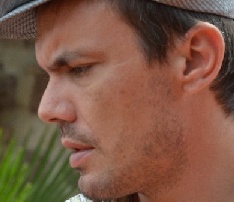Crop model development

Cassandra is the main developer of new models for:
- rice (WARM; Confalonieri et al., 2009a,b; Confalonieri et al., 2010a,b; Pagani et al., 2014);
- grassland (CoSMo; Confalonieri, 2014);
- herbaceous species (generic) (WOFOST-GT/GT2; Stella et al., 2014);
- giant reed (Arungro);
- hazelnut trees (Hazel).
WARM is a model for the simulation of the main aspects occurring in rice-based cropping systems. Current version implement approaches for crop growth and development (daily and hourly time step), plant-pathogen interactions, cold/heat induced spikelet sterility, lodging, floodwater effect on vertical thermal profile, paddy soil hydrology, grain quality, agrochemicals fate.
The first versions were developed in 2005 and were distributed within a dedicated application (WARM 1), developed until version 1.9.6 (August 2007). WARM is currently available via a new application (WARM 2), providing users with a friendly and powerful environment for running simulations, automatic calibrations (simple and genetic simplex), for evaluating the impact of climate change scenarios (the Climak weather generator is integrated in the simulation environment).
A special issue on WARM was published on the Italian Journal of Agrometeorology (3, 2006)
WARM is the model used by the European Commission for rice monitoring and yield forecast, and it is one of the 13 models used within the AgMIP-rice activities (Li et al., 2014). It is/was also used in many international projects (EU-FP7 projects E-AGRI, ERMES, MODEXTREME, FIRST project SCENARICE, World Bank AgroZone Simulator).
CoSMo is a grassland model developed as a tool for being coupled – within integrated studies – to models developed for other domains by scientists not specialistin the ecophysiological aspects involved with inter-specific competition. In practice, it is aimed at proposing scientists an intermediate solution between individual-centred models or via crop simulators parameterized to mimic average morphological and physiological features of the phytocoenosis as a whole. The model is based on two assumptions; the first is that community parameters can be derived at each time step from the relative presence of the different species and from parameter values determined forthe species in monoculture; the second is that inter-specific competition and changes in species relativepresence can be simulated as a function of species-specific responses to hierarchically arranged drivers (triggered and continuous) representing the suitability of the different species to the conditions exploredat each time step. These assumptions allow running grassland simulations using a single instance of a generic crop model (e.g., CropSyst, STICS, WOFOST) to simulate phytocoenosis dynamics and productivity.
WOFOST-GT/GT2 are new versions of the well known model WOFOST (van Keulen and Wolf, 1986).
WOFOST-GT reduces the complexity of the original version of WOFOST through the definition of functions driven by few parameters with biological meaning to substitute AFGEN tables. The number of parameters is about 60% less compared to WOFOST. Besides the increased usability, the new structure of the model facilitates its coupling with advanced tools for sensitivity analysis and automatic calibration.
WOFOST-GT2 is an extension of of WOFSOT-GT obtained by improving canopy representation and senescence.
Arungro is the first model for simulating giant reed (Arundo donax L.) growth. It was derived by modifying the sugarcane model Canegro (Inman-Bamber, 1991; Jones et al., 2003), since the two species share several morphological and physiological features. Canegro simulates tiller development and leaf emission within tiller, leaf area expansion and senescence, radiation interception, photosynthesis, respiration, biomass partitioning, rhizome dynamics, processes involved with post-harvest and restart phases.
Hazel is a model for hazelnut growth and development. It simulates development (14 vegetative and 7 reproductive phases), leaf area dynamics and light interception (with a 3-dimensional canopy representation), photosynthesis, photosynthates partitioning, and soil water balance. Photosynthesis can be simulated using a radiation use efficiency approach (net photosynthesis) or using the Farquhar (Farquhar et al., 1980) approach (gross photosynthesis). Hazel development is partially supported by Ferrero Trading Luxembourg s.a., in light of its operational use in Italy, Chile and Georgia.
References:
Confalonieri, R., 2014. CoSMo: a simple approach for reproducing plant community dynamics using a single instance of generic crop simulators. Ecological Modelling, 286, 1-10.
Confalonieri, R., Rosenmund, A.S., Baruth, B., 2009a. An improved model to simulate rice yield. Agronomy for Sustainable Development, 29, 463-474.
Confalonieri, R., Acutis, M., Bellocchi, G., Donatelli, M., 2009b. Multi-metric evaluation of the models WARM, CropSyst, and WOFOST for rice. Ecological Modelling, 220, 1395-1410.
Confalonieri, R., Bellocchi, G., Tarantola, S., Acutis, M., Donatelli, M., Genovese, G., 2010a. Sensitivity analysis of the rice model WARM in Europe: exploring the effects of different locations, climates and methods of analysis on model sensitivity to crop parameters. Environmental Modelling & Software, 25, 479-488.
Confalonieri, R., Bellocchi, G., Bregaglio, S., Donatelli, M., Acutis, M., 2010b. Comparison of sensitivity analysis techniques: a case study with the rice model WARM. Ecological Modelling, 221, 1897-1906.
Farquhar, G.D., von Caemmerer, S., Berry, J.A., 1980. A biochemical model of photosynthesis CO2 assimilation in leaves of C3 species. Planta, 149, 78-90.
Inman-Bamber, N.G., 1991. A growth model for sugar-cane based on a simple carbon balance and the CERES-Maize water balance. S. Afr. J. Plant Soil 8, 93-99.
Jones, J.W., Hoogenboom, G., Porter, C.H., Boote, K.J., Batchelor, W.D., Hunt, L.A., Wilkens, P.W., Singh, U., Gijsman, A.J., Ritchie, J.T., 2003. The DSSAT cropping system model. Eur. J. Agron. 18, 235-265.
Li, T., Hasegawa, T., Yin, X., Zhu, Y., Boote, K., Adam, M., Bregaglio, S., Buis, S., Confalonieri, R., Fumoto, T., Gaydon, D., Marcaida, M. III, Nakagawa, H., Oriol, P., Ruane, A.C., Ruget, F., Singh, B., Singh, U., Tang, L., Tao, F., Wilkens, P., Yoshida, H., Zhang, Z., Bouman, B., 2014. Uncertainties in predicting rice yield by current crop models under a wide range of climatic conditions. Global Change Biology, in press.
Pagani, V., Francone, C., ZhiMingWang, Qiu, L., Bregaglio, S., Acutis, M., Confalonieri, R., 2014. Evaluation of WARM for different establishment techniques in Jiangsu (China). European Journal of Agronomy, 59, 78-85.
Stella, T., Frasso, N., Negrini, G., Bregaglio, S., Cappelli, G., Acutis, M., Confalonieri, R., 2014. Model simplification and development via reuse, sensitivity analysis and composition: a case study in crop modelling. Environmental Modelling & Software, 59, 44-58.
van Keulen, H., Wolf, J., 1986. Modelling of agricultural production: weather soils and crops. In: Simulation Monographs. Pudoc, Wageningen, The Netherlands, p. 479.
- rice (WARM; Confalonieri et al., 2009a,b; Confalonieri et al., 2010a,b; Pagani et al., 2014);
- grassland (CoSMo; Confalonieri, 2014);
- herbaceous species (generic) (WOFOST-GT/GT2; Stella et al., 2014);
- giant reed (Arungro);
- hazelnut trees (Hazel).
WARM is a model for the simulation of the main aspects occurring in rice-based cropping systems. Current version implement approaches for crop growth and development (daily and hourly time step), plant-pathogen interactions, cold/heat induced spikelet sterility, lodging, floodwater effect on vertical thermal profile, paddy soil hydrology, grain quality, agrochemicals fate.
The first versions were developed in 2005 and were distributed within a dedicated application (WARM 1), developed until version 1.9.6 (August 2007). WARM is currently available via a new application (WARM 2), providing users with a friendly and powerful environment for running simulations, automatic calibrations (simple and genetic simplex), for evaluating the impact of climate change scenarios (the Climak weather generator is integrated in the simulation environment).
A special issue on WARM was published on the Italian Journal of Agrometeorology (3, 2006)
WARM is the model used by the European Commission for rice monitoring and yield forecast, and it is one of the 13 models used within the AgMIP-rice activities (Li et al., 2014). It is/was also used in many international projects (EU-FP7 projects E-AGRI, ERMES, MODEXTREME, FIRST project SCENARICE, World Bank AgroZone Simulator).
CoSMo is a grassland model developed as a tool for being coupled – within integrated studies – to models developed for other domains by scientists not specialistin the ecophysiological aspects involved with inter-specific competition. In practice, it is aimed at proposing scientists an intermediate solution between individual-centred models or via crop simulators parameterized to mimic average morphological and physiological features of the phytocoenosis as a whole. The model is based on two assumptions; the first is that community parameters can be derived at each time step from the relative presence of the different species and from parameter values determined forthe species in monoculture; the second is that inter-specific competition and changes in species relativepresence can be simulated as a function of species-specific responses to hierarchically arranged drivers (triggered and continuous) representing the suitability of the different species to the conditions exploredat each time step. These assumptions allow running grassland simulations using a single instance of a generic crop model (e.g., CropSyst, STICS, WOFOST) to simulate phytocoenosis dynamics and productivity.
WOFOST-GT/GT2 are new versions of the well known model WOFOST (van Keulen and Wolf, 1986).
WOFOST-GT reduces the complexity of the original version of WOFOST through the definition of functions driven by few parameters with biological meaning to substitute AFGEN tables. The number of parameters is about 60% less compared to WOFOST. Besides the increased usability, the new structure of the model facilitates its coupling with advanced tools for sensitivity analysis and automatic calibration.
WOFOST-GT2 is an extension of of WOFSOT-GT obtained by improving canopy representation and senescence.
Arungro is the first model for simulating giant reed (Arundo donax L.) growth. It was derived by modifying the sugarcane model Canegro (Inman-Bamber, 1991; Jones et al., 2003), since the two species share several morphological and physiological features. Canegro simulates tiller development and leaf emission within tiller, leaf area expansion and senescence, radiation interception, photosynthesis, respiration, biomass partitioning, rhizome dynamics, processes involved with post-harvest and restart phases.
Hazel is a model for hazelnut growth and development. It simulates development (14 vegetative and 7 reproductive phases), leaf area dynamics and light interception (with a 3-dimensional canopy representation), photosynthesis, photosynthates partitioning, and soil water balance. Photosynthesis can be simulated using a radiation use efficiency approach (net photosynthesis) or using the Farquhar (Farquhar et al., 1980) approach (gross photosynthesis). Hazel development is partially supported by Ferrero Trading Luxembourg s.a., in light of its operational use in Italy, Chile and Georgia.
References:
Confalonieri, R., 2014. CoSMo: a simple approach for reproducing plant community dynamics using a single instance of generic crop simulators. Ecological Modelling, 286, 1-10.
Confalonieri, R., Rosenmund, A.S., Baruth, B., 2009a. An improved model to simulate rice yield. Agronomy for Sustainable Development, 29, 463-474.
Confalonieri, R., Acutis, M., Bellocchi, G., Donatelli, M., 2009b. Multi-metric evaluation of the models WARM, CropSyst, and WOFOST for rice. Ecological Modelling, 220, 1395-1410.
Confalonieri, R., Bellocchi, G., Tarantola, S., Acutis, M., Donatelli, M., Genovese, G., 2010a. Sensitivity analysis of the rice model WARM in Europe: exploring the effects of different locations, climates and methods of analysis on model sensitivity to crop parameters. Environmental Modelling & Software, 25, 479-488.
Confalonieri, R., Bellocchi, G., Bregaglio, S., Donatelli, M., Acutis, M., 2010b. Comparison of sensitivity analysis techniques: a case study with the rice model WARM. Ecological Modelling, 221, 1897-1906.
Farquhar, G.D., von Caemmerer, S., Berry, J.A., 1980. A biochemical model of photosynthesis CO2 assimilation in leaves of C3 species. Planta, 149, 78-90.
Inman-Bamber, N.G., 1991. A growth model for sugar-cane based on a simple carbon balance and the CERES-Maize water balance. S. Afr. J. Plant Soil 8, 93-99.
Jones, J.W., Hoogenboom, G., Porter, C.H., Boote, K.J., Batchelor, W.D., Hunt, L.A., Wilkens, P.W., Singh, U., Gijsman, A.J., Ritchie, J.T., 2003. The DSSAT cropping system model. Eur. J. Agron. 18, 235-265.
Li, T., Hasegawa, T., Yin, X., Zhu, Y., Boote, K., Adam, M., Bregaglio, S., Buis, S., Confalonieri, R., Fumoto, T., Gaydon, D., Marcaida, M. III, Nakagawa, H., Oriol, P., Ruane, A.C., Ruget, F., Singh, B., Singh, U., Tang, L., Tao, F., Wilkens, P., Yoshida, H., Zhang, Z., Bouman, B., 2014. Uncertainties in predicting rice yield by current crop models under a wide range of climatic conditions. Global Change Biology, in press.
Pagani, V., Francone, C., ZhiMingWang, Qiu, L., Bregaglio, S., Acutis, M., Confalonieri, R., 2014. Evaluation of WARM for different establishment techniques in Jiangsu (China). European Journal of Agronomy, 59, 78-85.
Stella, T., Frasso, N., Negrini, G., Bregaglio, S., Cappelli, G., Acutis, M., Confalonieri, R., 2014. Model simplification and development via reuse, sensitivity analysis and composition: a case study in crop modelling. Environmental Modelling & Software, 59, 44-58.
van Keulen, H., Wolf, J., 1986. Modelling of agricultural production: weather soils and crops. In: Simulation Monographs. Pudoc, Wageningen, The Netherlands, p. 479.
 2019 - Ecological Modelling, 401, 111-128
Development of generic crop models for simulation of multi-species plant communities in mown grasslands.
Movedi, E., Bellocchi, G., Argenti, G., Paleari, L., Vesely, F.M., Staglianò, N., Dibari, C., Confalonieri, R. 2019 - Ecological Modelling, 401, 111-128
Development of generic crop models for simulation of multi-species plant communities in mown grasslands.
Movedi, E., Bellocchi, G., Argenti, G., Paleari, L., Vesely, F.M., Staglianò, N., Dibari, C., Confalonieri, R. |
 2016 - European Journal of Agronomy, 76, 107-117
Coupling a generic disease model to the WARM rice simulator to assess leaf and panicle blast impacts in temperate climate.
Bregaglio, S., Titone, P., Cappelli, G., Tamborini, L., Mongiano, G., Confalonieri, R. 2016 - European Journal of Agronomy, 76, 107-117
Coupling a generic disease model to the WARM rice simulator to assess leaf and panicle blast impacts in temperate climate.
Bregaglio, S., Titone, P., Cappelli, G., Tamborini, L., Mongiano, G., Confalonieri, R. |
 2016 - Ecological Modelling, 329, 86-99
Development and evaluation of new modelling solutions to simulate hazelnut (Corylus avellana L.) growth and development.
Bregaglio, S., Orlando, F., Forni, E., De Gregorio, T., Falzoi, S., Boni, C., Pisetta, M., Confalonieri, R. 2016 - Ecological Modelling, 329, 86-99
Development and evaluation of new modelling solutions to simulate hazelnut (Corylus avellana L.) growth and development.
Bregaglio, S., Orlando, F., Forni, E., De Gregorio, T., Falzoi, S., Boni, C., Pisetta, M., Confalonieri, R. |
 2016 - Field Crops Research, 197, 125-132
WOFOST-GTC: a new model for the simulation of winter rapeseed production and oil quality.
Gilardelli, C., Stella, T., Frasso, N., Cappelli, G., Bregaglio, S., Chiodini, M.E., Scaglia, B., Confalonieri, R. 2016 - Field Crops Research, 197, 125-132
WOFOST-GTC: a new model for the simulation of winter rapeseed production and oil quality.
Gilardelli, C., Stella, T., Frasso, N., Cappelli, G., Bregaglio, S., Chiodini, M.E., Scaglia, B., Confalonieri, R. |
 2015 - Computers and Electronics in Agriculture, 113, 193-202
Reimplementation and reuse of the Canegro model: From sugarcane to giant reed
Stella, T., Francone, C., Yamaç, S.S., Ceotto, E., Pagani, V., Pilu, R., Confalonieri, R. 2015 - Computers and Electronics in Agriculture, 113, 193-202
Reimplementation and reuse of the Canegro model: From sugarcane to giant reed
Stella, T., Francone, C., Yamaç, S.S., Ceotto, E., Pagani, V., Pilu, R., Confalonieri, R. |
 2015 - Global Change Biology, 21, 1328-1341
Uncertainties in predicting rice yield by current crop models under a wide range of climatic conditions.
Li, T., Hasegawa, T., Yin, X., Zhu, Y., Boote, K., Adam, M., Bregaglio, S., Buis, S., Confalonieri, R., Fumoto, T., Gaydon, D., Marcaida, M., Nakagawa, H., Oriol, P., Ruane, A.C., Ruget, F., Singh, B., Singh, U., Tang, L., Tao, F., Wilkens, P., Yoshida, H., Zhang, Z., Bouman, B. 2015 - Global Change Biology, 21, 1328-1341
Uncertainties in predicting rice yield by current crop models under a wide range of climatic conditions.
Li, T., Hasegawa, T., Yin, X., Zhu, Y., Boote, K., Adam, M., Bregaglio, S., Buis, S., Confalonieri, R., Fumoto, T., Gaydon, D., Marcaida, M., Nakagawa, H., Oriol, P., Ruane, A.C., Ruget, F., Singh, B., Singh, U., Tang, L., Tao, F., Wilkens, P., Yoshida, H., Zhang, Z., Bouman, B. |
 2014 - Ecological Modelling, 286, 1-10
CoSMo: a simple approach for reproducing plant community dynamics using a single instance of generic crop simulators.
Confalonieri, R. 2014 - Ecological Modelling, 286, 1-10
CoSMo: a simple approach for reproducing plant community dynamics using a single instance of generic crop simulators.
Confalonieri, R. |
 2014 - European Journal of Agronomy, 59, 78-85
Evaluation of WARM for different establishment techniques in Jiangsu (China).
Pagani, V., Francone, C., ZhiMingWang, Qiu, L., Bregaglio, S., Acutis, M., Confalonieri, R. 2014 - European Journal of Agronomy, 59, 78-85
Evaluation of WARM for different establishment techniques in Jiangsu (China).
Pagani, V., Francone, C., ZhiMingWang, Qiu, L., Bregaglio, S., Acutis, M., Confalonieri, R. |
 2014 - Environmental Modelling & Software, 59, 44-58
Model simplification and development via reuse, sensitivity analysis and composition: a case study in crop modelling.
Stella, T., Frasso, N., Negrini, G., Bregaglio, S., Cappelli, G., Acutis, M., Confalonieri, R. 2014 - Environmental Modelling & Software, 59, 44-58
Model simplification and development via reuse, sensitivity analysis and composition: a case study in crop modelling.
Stella, T., Frasso, N., Negrini, G., Bregaglio, S., Cappelli, G., Acutis, M., Confalonieri, R. |
 2010 - Environmental Modelling & Software, 25, 479-488
Sensitivity analysis of the rice model WARM in Europe: exploring the effects of different locations, climates and methods of analysis on model sensitivity to crop parameters.
Confalonieri, R., Bellocchi, G., Tarantola, S., Acutis, M., Donatelli, M., Genovese, G. 2010 - Environmental Modelling & Software, 25, 479-488
Sensitivity analysis of the rice model WARM in Europe: exploring the effects of different locations, climates and methods of analysis on model sensitivity to crop parameters.
Confalonieri, R., Bellocchi, G., Tarantola, S., Acutis, M., Donatelli, M., Genovese, G. |
 2009 - Ecological Modelling, 220, 1395-1410
Multi-metric evaluation of the models WARM, CropSyst, and WOFOST for rice.
Confalonieri, R., Acutis, M., Bellocchi, G., Donatelli, M. 2009 - Ecological Modelling, 220, 1395-1410
Multi-metric evaluation of the models WARM, CropSyst, and WOFOST for rice.
Confalonieri, R., Acutis, M., Bellocchi, G., Donatelli, M. |
 2009 - Agronomy for Sustainable Development, 29, 463-474
An improved model to simulate rice yield.
Confalonieri, R., Rosenmund, A.S., Baruth, B. 2009 - Agronomy for Sustainable Development, 29, 463-474
An improved model to simulate rice yield.
Confalonieri, R., Rosenmund, A.S., Baruth, B. |
- Analysis and modelling of biophysical processes within agro-environmental systems
- Biophysical modelling to support breeding
- Climate change - impacts and adaptation
- Crop model development
- Development of management support systems
- Development of mobile apps for agroenvironmental research
- Development of software solutions for agricultural insurances
- Large area crop monitoring and yield forecasting
- New methods for the analysis and evaluation of agro-environmental simulation models
- New statistical methods for agro-environmental research










